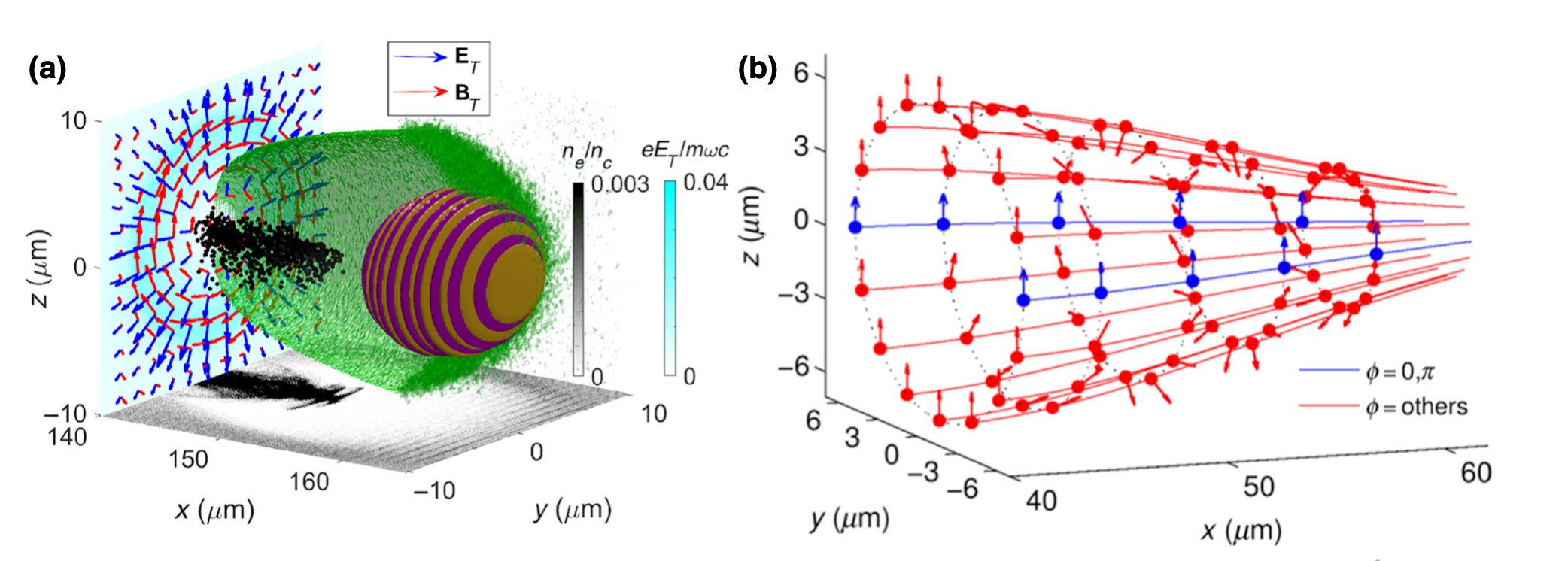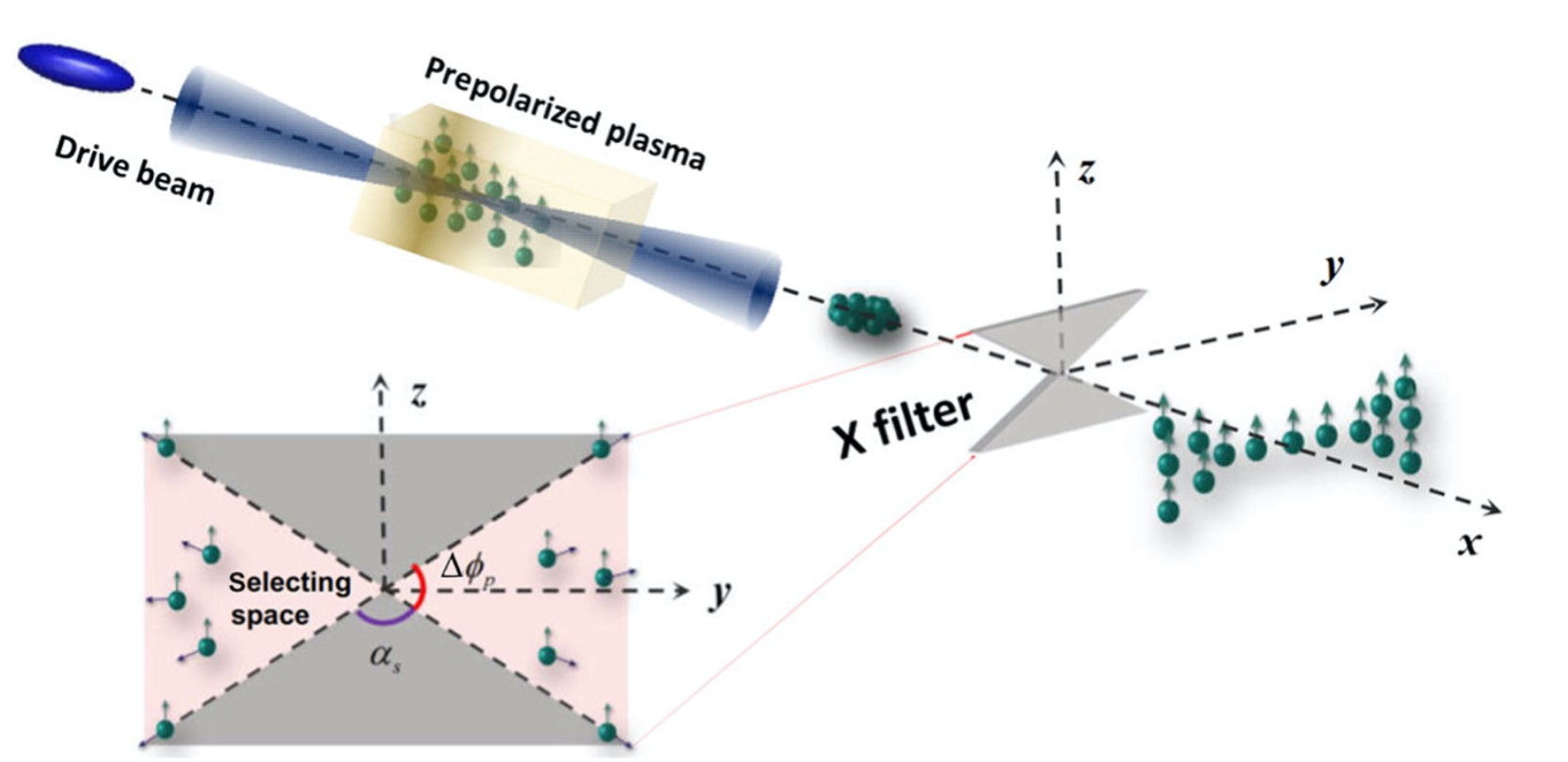High energy polarized electron beams are widely used in high energy physics (linear colliders), nuclear physics and material science. However, such polarized electron beams are usually generated on conventional accelerators that are typically very large and expensive.
Recently, a research team from Shanghai Institute of Optics and Fine Mechanics of the Chinese Academy of Sciences (CAS) proposed a spin filter method for wakefiled acceleration of highly polarized electron beams. The concept promises an all optical approach to provide polarized electron sources in a cost-efficient and compact way. The study was published in Physical Review Applied.
High intensity laser or particle beam propagating into a pre-polarized target will drive a bubble wakefield to accelerate the electrons. During this process, electron spins would precess in the bubble field. By means of three-dimensional particle-in-cell simulations including spin dynamics, scientists found that the spin precession showed a unique dependence on the azimuthal angle in phase space for transversally polarized target. In particular, in a certain region of the phase space, the spin precession was significantly suppressed.
Therefore, they proposed an X-shaped filter to filter out the electrons of low polarization and let pass the highly polarized section. This simple method efficiently purified the beam polarization from about 35% to >80%.
The spin filter method was further benchmarked by simulations and the robustness was discussed in detail.
This idea relaxes the parameter limitations for obtaining highly polarized electron beam via wakefield acceleration and motivates the development of laser-driven polarized electron sources for potential applications such as future electron-positron colliders.
This work was supported by the Strategic Priority Research Program of the Chinese Academy of Sciences, the National Natural Science Foundation of China and the Recruitment Program for Young Professionals.

Fig.1 A typical laser wakefiled acceleration structure and field distributions. (Image by SIOM)
Fig.2 The sketch for the spin filter. (Image by SIOM)
Article website:
https://doi.org/10.1103/PhysRevApplied.13.044064
Contact:
Mr. CAO Yong
General Administrative Office
Shanghai Institute of Optics and Fine Mechanics, CAS
Email: caoyong@siom.ac.cn